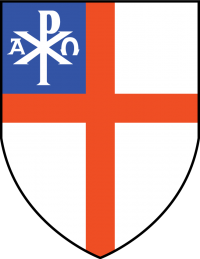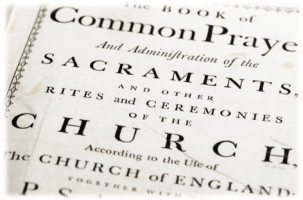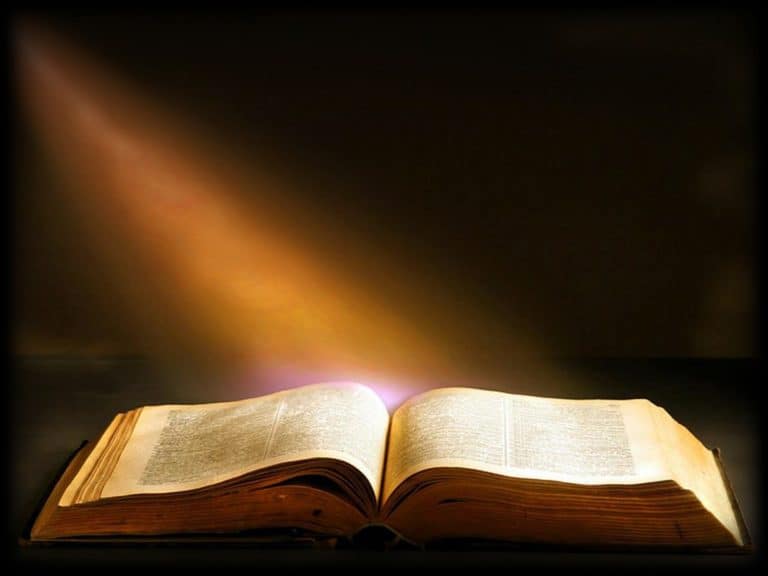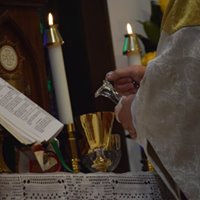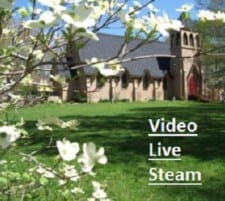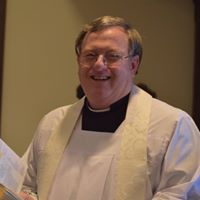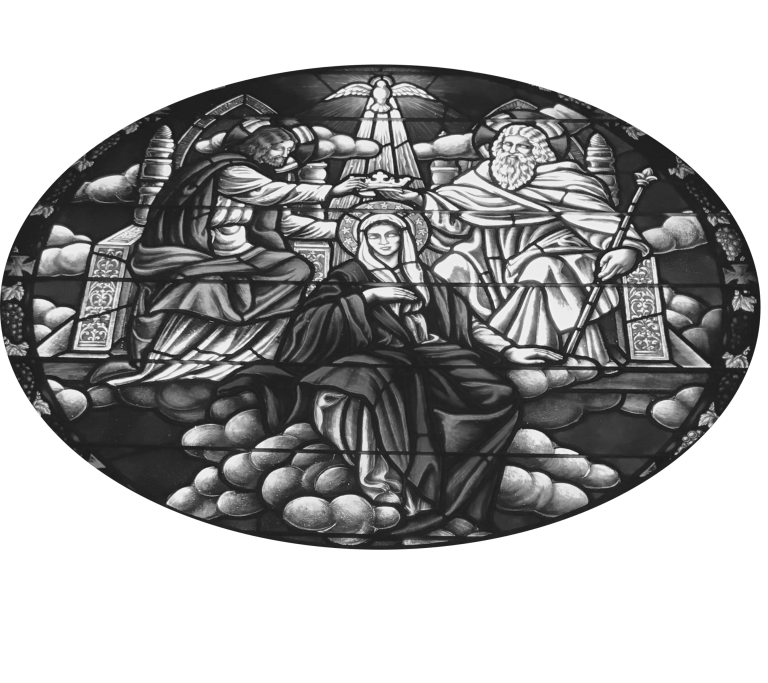1928 American Prayer Book Eucharistic Rite
Excellent synopsis of the 1928 American Prayer Book Eucharistic Rite by Father Victor E. Novak…
THE 1928 BOOK OF COMMON PRAYER – for people who really want to know!
The Book of Common Prayer has a history of more than four and a half centuries of daily liturgical use and is in direct and organic continuity with the beliefs, practices, and liturgies of the undivided Church in the West. It is now time to take an in-depth look at this Liturgy.
The Eucharistic Liturgy of the 1928 Book of Common Prayer opens with the Collect for Purity. This Collect was part of the celebrant’s preparation in the Sarum Sacramentary (c. 1085), but its use dates back to at least AD 804. In the Sarum Sacramentary it appears in Latin: “Deus Cui omne cor patet, et omnis voluntas loquitur, et Quem nullum latet secretum, purifica per infusionem Sancti Spiritus cogitationes cordis nostri; ut Te perfecte diligirere, et digne laudare mereamur. Per Chrustum Dominum nostrum. Amen.
The Collect is found in the sacramentary of Alcuin (c. 735-804), the prime minister of Charlemagne, and the reviser of the Roman Rite in the Frankish kingdom. It is unknown whether Alcuin composed the Collect himself or took it from an earlier Service book that is no longer extant, but we know that it has been used for more than twelve hundred years. The Collect for Purity continues to be a prayer of preparation in the Book of Common Prayer. It remains as part of the preparation for the celebration of the Sacred Mysteries and is said before the altar.
The Decalogue entered the Book of Common Prayer in 1552, and has remained in the Anglican Rite ever since. However, as we have seen, its use was no innovation. The Ten Commandments were used liturgically in the early Church in general and in the British Isles in particular, so there is precedent for its use. “It is certain that Cranmer accepted the Medieval view that the Kyrie was penitential… It may be that he was desirous of including in the liturgy the regular recitation of the commandments, along with the Creed and the Lord’s Prayer, as one of the three things Christians ought especially ‘to know and believe to their souls health.'”21
Blessed Charles Grafton (AD 1830-1912), bishop of Fon du Lac, Wisconsin wrote, “The recitation of the Decalogue in this place is a peculiarity of the Anglican rite. Let us not therefore disparage it, but rather glorify it; for may we not humbly believe that in the development of the Liturgy each portion of Christendom bears its own witness to the faith and has its own special liturgical glories? Our Liturgy, beginning with the Decalogue and omitting the Gloria in Excelsis, is in striking contrast with the Roman… and there is something very beautiful in beginning the drama of Christ’s life and death with the angel’s song in Bethlehem. But yet it is a grand idea – a grander one, we venture to think – to throw the mind first of all back behind the scene of Bethlehem into the eternal counsels themselves and into the presence of the ever-blessed Trinity. The Decalogue does this. It places us before the awful grandeur of God Himself and enshrines us in the splendor of His glory” (The Mystical Meaning of the Liturgy).
The Summary of the Law is taken from Holy Scripture and was first used in the Non-Jurors Prayer Book of 1718. It is found in the Scottish Liturgy of 1764, was part of the first American Prayer Book in 1789, and remains in the 1928 Book of Common Prayer. It is also found in the English 1928 Proposed Book and in the Scottish 1929 Book of Common Prayer, among others. The Summary of the Law may be used in addition to the Decalogue or as a substitute for it, provided that the Decalogue is used at least one Sunday in each month.
The Kyries may be used in the three-fold form as found in the Book of Common Prayer or in the nine-fold form as found in the 1940 Hymnal, which is also an authorized liturgical book of the American Church. “The number of repetitions of the Kyrie [in the early Church] was not constant, though three seems always to have been the most usual, and the ninefold Kyrie now familiar in the west was a natural and obviously symbolic number.”22
The Gloria in Excelsis had only come into use by priests on Sundays in the twelfth century, and with the understanding of the Kyries as being penitential, it broke up the natural progression of the Liturgy. The ancient Roman Rite did not include the Gloria in excelsis, and when the Gloria first made its appearance in the Roman Rite it was used only in pontifical celebrations by bishops at Christmas. To avoid breaking up the natural progression of the Liturgy, and in order to return to primitive liturgical practice, the Gloria was removed from the ante-communion (Liturgy of the Word). Not wanting to eliminate this ancient hymn of praise that had come into the West from the Eastern Liturgy of the Hours, the Anglican Church moved it toward the end of the Liturgy where it serves beautifully as a fixed Post Communion Anthem.
The Collect of the Day, along with other Collects, and the Epistle and Gospel lessons follow the Kyries. The term “Collect” is a survival in the Anglican Liturgy from the ancient Gallican Rites. In the Roman Rite the word used is simply Oratio: the Prayer. “The collect is therefore the first variable prayer of the mass. It is strictly a western feature, and in its pure form is direct and brief, consisting of an address, a petition and an adjuration.”23
“This section of variable prayers [collects] and lessons used at the Holy Communion on the several Sundays and holy days of the Church Year is called the ‘Propers’ of the Eucharist; and, with the few Proper Prefaces…, they carry on in our Prayer Book the tradition of the Western Church, developed in the fourth century, of relating significant portions of the Eucharistic liturgy to the seasonal themes of the movable and immovable feasts and fasts” They are for the most part identical to what is found in Sacramentaries and Missals that had been in use throughout the Western Church for centuries and were still being used at the time of the Reformation. “In the case of the Collects, the Prayer Book substitutions were all designed to eliminate from the liturgy certain offensive doctrines of the medieval Church – notably those enshrined in the Saints’ Days Collects respecting the ‘works of supererogation’ of the saints whose merits might be applied to our benefit by their intercession.”
The Nicene-Constantinopolitan Creed follows the reading of the Gospel. After hearing the readings from the Scriptures the people of God confess their faith. “Our earliest record of the creed said during the liturgy tells that it was introduced by the Patriarchs Peter the Dyer at Antioch (470-488) and Timothy I of Constantinople (511-518)… In the west, the creed first appeared in Spain as a protest against the Arians. It was said after the consecration, before the Our Father, where it remains in the Mozarabic rite. Rome, ever as conservative in liturgical matters as radical in matters of polity, received it cautiously. Leo III (795-816) permitted it to be used in Gaul where it had been imported from the east; but he forbad the addition of the filioque… In 1014 when Henry II was crowned in Rome he noted the absence of the creed and persuaded the pope, Benedict VIII, to impose it upon his church. Now the creed is found in all rites, in the liturgy of the faithful, but at varying places.”26
After the Creed, the 1928 Book of Common Prayer has a rubric that says, “Then followeth the Sermon.” The Liturgy of the Book of Common Prayer restores the ancient balance of Law and Gospel, and of Word and Sacrament. The sermon was restored as an important part of the Christian Synaxis.
The Offertory follows the sermon. In the primitive Roman Rite the Bread and Wine were offered together with one short prayer called the Secret. The practice of offering the bread and wine separately and the use of the Offertory Prayers found in the Tridentine Roman Rite are all much later. The Offertory of the 1928 Book of Common Prayer restores ancient Western liturgical practice.
Next follows the restoration of the Prayers of the Faithful or Intercessions, called in the Prayer Book, “The Prayer for the Whole [healthy] State of Christ’s Church.” The Prayers of the Faithful had been found early in the Liturgy of the Faithful in the primitive Roman Rite, but had later been moved to the Canon, leaving only the Oremus, but no Intercessions. In the Mozarabic Rite the Intercessions are also separate from the Canon and placed near the Offertory. The Liturgy of the 1928 Book of Common Prayer restores the Intercessions to their ancient place in the Western Liturgy.
After the Prayer for the Whole State of Christ Church comes the Exhortation (used thrice each year), the Invitation, General Confession, Absolution and Comfortable Words. These devotions in preparation for receiving the sacrament of Holy Communion are an English version of the French and German vernacular preparation called Prone that had long been inserted in the Latin Mass on Sundays and holy days. References to Prone can be found in documents of the ninth century, long before the Great Schism.
With the General Confession and Absolution, the faithful are now prepared for the Consecration of the elements and the reception of the sacrament Holy Communion. The Prayer of Consecration (Anaphora or Canon) is introduced by the Sursum Corda. The 1928 Book of Common Prayer has Proper Prefaces for ten holy days: Christmas, Epiphany, Purification, Annunciation, Transfiguration, Easter, Ascension, Whitsunday (Pentecost), Trinity Sunday and All Saints Day. The Gregorian Sacramentary (c. seventh century) also had ten.
The Sanctus varies in wording, but is found in all living liturgies. The Liber Pontificalis ascribes its use in the liturgy to Pope Sixtus I (AD 119-128). The Bendictus is a hymn found in the 1940 Hymnal, an authorized liturgical book of the Church, and is commonly used in both High and Low Masses immediately following the Sanctus.
Following the Sanctus and Benedictus, the Prayer of Consecration continues: “All glory be to thee, Almighty God, our heavenly Father, for that thou of thy tender mercy, didst give thine only Son…” (1928 BCP, p. 80). The Eucharistic Liturgy is offered to the Father through the Son, and the gifts are offered as an Oblation to the Father: “we, thy humble servants, do celebrate and make here before thy Divine Majesty, with these thy holy gifts, which we now offer unto thee…” (1928 BCP, p. 80).
“The first paragraph [of the Prayer of Consecration] takes up the theme of ‘glory’ from the Sanctus, in thanksgiving for the supreme gift of God’s mercy in the perfect and all sufficient sacrifice of His Son upon the Cross for the redemption of the whole world from sin… These words do not commit our Church to any one of the various theories about the Atonement wrought by Christ, but simply safeguard the doctrine that He alone is the ‘Propitiation for our sins’ (I John ii. 1-2). The Eucharist is the perpetual memorial in the Church of that redemption made once for all, and the continual presentation and pleading by the Church before God of its ‘full, perfect, and sufficient’ accomplishment… Cranmer had both the Eastern and Western forms [of Prayers of Consecration] before him. He followed the order of the Latin Canon and the phrasing of the Greek prayers… Moreover the Non-Jurors removed the Invocation to its present (Eastern) position, immediately following the Oblation.”27
Early editions of the Book of Common Prayer accepted the then generally held Western view that the Consecration was effected by the Words of Institution, and there is patristic support for this view. In De Sacramentis, St. Ambrose of Milan (d. 397) discussed the Consecration which he attributed to the Words of Institution: “Thus the word of Christ consecrates this sacrament.” And St. Augustine of Hippo taught, “Accedat verbum ad elementum, et fit sacramentum” – “If the word be joined to the element, it becomes a sacrament.”
However, as the Anglican Reformation (really Restoration) continued, the Church embraced the practice of the Eastern Churches. The 1928 Book of Common Prayer follows the Scottish Order with the Invocation (Epiclesis) after the Words of Institution and the Oblation. The English Proposed book of 1928 and the Scottish 1929 Book of Common Prayer have also followed this Eastern liturgical practice. Apostolic Tradition by St. Hippolytus demonstrates that the use of an Epiclesis after the Words of Institution was the ancient Roman practice as well. Scholars are unsure when or why the use of an Epiclesis was discontinued in the Roman Canon. It has been said that Tradition is the life of the Holy Spirit in the Church, and the Holy Spirit has been constantly leading the Anglican Church (in the days of its orthodoxy) in the direction of patristic Christianity.
Where the 1928 Book of Common Prayer is somewhat unique is in its use of “Word and Holy Spirit” rather than just “Holy Spirit” in the Invocation (Epiclesis). However, once again this was no unhistorical innovation. The Invocation of the Word, Christ Himself, was sometimes used in the primitive Church in the Eucharistic Liturgy. For instance, Bishop Serapion of Thumis in Egypt (c. 339-363), an important mid-fourth century source, prays in his Liturgy that the Word come upon the elements that they become the Body and Blood of Christ: “O God of truth, let your holy Word come upon this bread, that the bread may become the body of the Word, and upon this cup, that the cup may become the blood of Truth.” “Again, after its first edition, the American Prayer Book capitalized ‘Word’ as well as ‘Holy Spirit,’ to prevent any misunderstanding that the ‘Word’ referred to is the Words of Institution rather than Christ the Word Himself.”28
The Words of Institution in the 1928 Book of Common Prayer follows the Eastern pattern rather than the Western. “The Gallican and Roman [Rites] introduce the words of institution with the phrase ‘Who, the day before he suffered’ instead of the eastern (and Mozarabic) formula ‘Who, the night in which he was betrayed…'” The 1928 Book of Common Prayer has, “For in the night in which he was betrayed.”
A comparison of the Prayer of Consecration of the 1928 Book of Common Prayer with that of the primitive Roman Rite as given by St. Hippolytus (c. 215) of Rome, in his Apostolic Tradition, will demonstrate that the similarities are striking. Both are offered to God the Father through the Son, both begin with a Thanksgiving for redemption, then pass to a narrative of the Institution, followed by an Oblation and Invocation (Epiclesis), and end with a Doxology. The Canon of St. Hippolytus is actually shorter than that in the 1928 Book of Common Prayer. Neither of these Canons have any intercessions for the living or the dead because the Prayers of the Faithful (Intercessions), as we have seen, are offered earlier in the Liturgy; and neither Prayer contains commemorations of the saints as they did not begin to enter the Liturgy until the end of the fifth century. It is interesting to note that St. Hippolytus of Rome wrote in Greek and lived at a time before Latin became the liturgical language of the Roman Church.
Following the Prayer of Consecration is the Lord’s Prayer, exactly where it was fixed in the Roman Rite by St. Gregory the Great. Next follows the Prayer of Humble Access. The rubrics call for the celebrant to pray this prayer in behalf of the congregation, but it is common practice today for the entire congregation to say it together. The rubrics originally called for the celebrant to say this prayer alone in order to avoid having the Liturgy disrupted by the silence of those in the congregation influenced by the more radical “Reformation” on the Continent, and later by the Puritans.
The Prayer of Humble Access is an Anglican counterpart to the prayers said just before Communion in the Byzantine Rite that begin, “I believe O Lord and Confess…” and “Of thy Mystic Supper…”
The Prayer of Humble Access is normally followed by the Agnus Dei. This hymn was introduced into the Roman Rite by a Syrian pope, Sergius I (687-701), and is found in the 1940 Hymnal.
Following the administration of the sacrament of Holy Communion, the Liturgy of the Book of Common Prayer has a fixed Post-Communion Collect, the Prayer of Thanksgiving. Both variable and fixed post-communion prayers are common in the liturgies of Christendom, with the Anglican Rite having a fixed prayer. Other liturgies with a fixed prayer corresponding to the Anglican Prayer of Thanksgiving would be the Liturgy of St. James and the Celtic liturgy of the Lorrha (Stowe) Missal (c. 750).
The Liturgy of St. James has this prayer: “We give thee thanks, Christ our God, that thou hast vouchsafed to make us partakers of thy Body and Blood, for the remission of sins, and eternal life. Keep us, we beseech thee, without condemnation, because thou art good, and the lover of men. We thank thee, God and Saviour of all, for all the good things which thou hast bestowed on us; and for the participation of thy holy and spotless Mysteries… ”
The Celtic Liturgy of the Lorrha (Stowe) Missal has this prayer: “We give thanks unto thee, O Lord, Holy Father, Almighty eternal God, who hast fed us with the communion of the Body and Blood of Christ thy Son; and we humbly implore thy mercy, O Lord, that this sacrament may not be to us for judgement to condemnation, but for pardon through the intercession of the Saviour, May it be a cleansing of sins, a strengthening of the weak, a support against the perils of the world; May this Communion purge us from sin, and make us partakers of the heavenly joys it gives. Through…”
The similarity of these prayers with the Prayer of Thanksgiving in the Anglican Liturgy is self-evident. After the Prayer of Thanksgiving comes the Gloria in excelsis as a Post-Communion Anthem, corresponding to Matthew 26:30. The Last Supper had just ended, “And when they had sung an hymn they went out…” The celebrant then dismisses the congregation with a Blessing.
